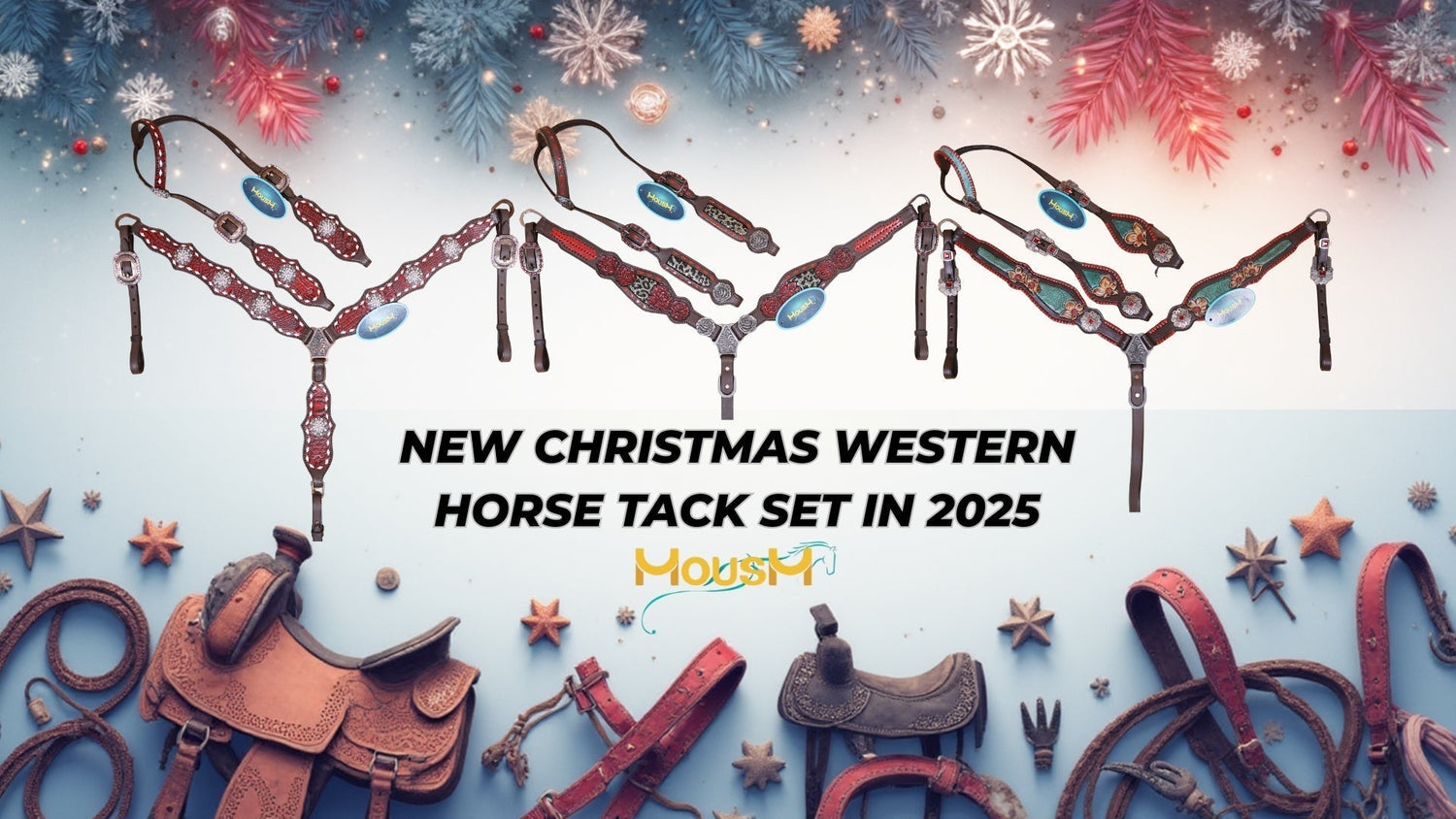In this blog, we will discuss about storing your saddle properly is just as important as cleaning or conditioning it. A saddle is a significant investment, and how you store it can greatly affect its lifespan, performance, and appearance. Whether it’s English or Western, leather or synthetic, every saddle needs a clean, supportive, and climate-conscious environment to stay in top condition.
When stored incorrectly, saddles are prone to several common issues:
-
Warping: If a saddle is left resting on a narrow rail, uneven surface, or hung incorrectly, the tree (the saddle’s internal framework) can become misshapen. Warping can cause discomfort to the horse, misalign the fit, and lead to expensive repairs or even make the saddle unusable.
-
Leather Cracking: Leather needs balanced moisture to stay supple. Exposure to heat, direct sunlight, or extremely dry conditions can dry out the leather fibers, making them brittle and prone to cracking. Once cracked, leather is difficult to restore and weakens the structural integrity of the saddle.
-
Mold and Mildew: On the flip side, storing a saddle in a damp tack room, barn, or basement can lead to excess moisture build-up. This creates the perfect environment for mold and mildew to thrive. Mold not only stains the leather and creates musty odors, but it also breaks down leather fibers over time.
Taking a few simple precautions — such as using a properly shaped saddle rack, keeping the storage area climate-controlled, and checking your saddle regularly — can prevent these issues and keep your saddle looking and functioning like new. Proper storage is not just about organization; it's about protecting both your gear and your horse’s comfort.
Choose the Right Location
Where you store your saddle matters just as much as how you store it. The right environment helps prevent common damage like warping, cracking, and mold growth. Here’s what to look for:
-
Climate-Controlled Area: Saddles do best in spaces where the temperature and humidity stay fairly consistent. Avoid locations that get extremely hot or cold, as leather can dry out, shrink, or stiffen. Ideally, choose an ideal room temperature that maintains moderate humidity. Excess heat can dry and crack leather, while cold can make it stiff and brittle.
-
Avoid Damp Spaces: Moisture is leather’s enemy. Stay away from basements, outdoor sheds, or tack rooms that get wet or humid. These environments often lead to mold and mildew forming on leather and fleece linings. Even occasional dampness can cause long-term damage if not addressed quickly.
-
Good Air Circulation: Proper airflow is key to preventing musty odors and mold buildup. Choose a location with natural ventilation or install a small fan or dehumidifier if needed. Avoid sealing your saddle in airtight containers or plastic covers, which can trap moisture and encourage fungal growth.
Use a Proper Saddle Stand or Rack
The type of stand or rack you use plays a major role in preserving your saddle’s shape and structure. A poor support system can lead to permanent damage, especially to the tree and panels. Here’s what to consider:
-
Support the Tree: Choose a rack or stand that closely matches the shape of your saddle. It should distribute the saddle's weight evenly across the panels and under the tree. This helps maintain the saddle’s structural integrity and ensures it stays comfortable for your horse.
-
Avoid Narrow Bars: Avoid storing your saddle on narrow metal rails, pipes, or broom handles. These can create pressure points on the underside of the saddle, leading to dents in the flocking, misshaped panels, or even a warped tree over time. Padding or a contoured design is best.
-
Wall-Mounted or Freestanding: Both types can work well as long as they’re stable and secure. Wall-mounted racks save space and keep the saddle off the ground, while freestanding stands are portable and convenient for tack rooms or trailers. Make sure the saddle sits level and doesn’t tilt forward or back, which can stress the leather and tree unevenly.
Discover Our Western Saddle Collection
Clean Before Storing
A clean saddle lasts longer, performs better, and is less likely to develop issues like mildew, odors, or premature wear. Even if you’re just storing it overnight, a quick cleaning routine goes a long way.
-
Remove Dust and Sweat: After every ride, wipe down your saddle with a soft cloth or brush to remove dust, dirt, and sweat buildup. These residues contain salt and grime that can dry out or stain leather over time.
-
Deep Clean Monthly: At least once a month—or more often in humid or high-use conditions—give your saddle a deeper clean using a gentle leather cleaner or saddle soap. Work in small sections with a damp sponge or cloth, then wipe away any excess product. This helps preserve the leather’s texture and flexibility.
-
Dry Completely: Always make sure your saddle is completely dry before storing it. Even slight moisture, whether from cleaning or rain, can lead to mold, mildew, or rot if trapped during storage. After cleaning, let the saddle air-dry in a well-ventilated space before placing it on the rack.
Condition the Leather
Conditioning is key to keeping your saddle’s leather soft, flexible, and protected from cracking, especially if you ride regularly or live in a dry climate. But it’s important to apply the right amount of the right product.
-
Apply Leather Conditioner: Use a high-quality leather conditioner after cleaning, particularly if the leather feels dry or stiff. Conditioning helps replenish natural oils, prevent cracking, and maintain the leather’s resilience. In arid or air-conditioned environments, conditioning may be needed more often.
-
Avoid Over-Oiling: While conditioning is helpful, too much oil or conditioner can be just as harmful as none at all. Over-conditioning can saturate the leather, making it spongy or sticky, and may weaken stitching or cause buildup. A light, even application is best—let the leather absorb it, then buff off any excess.
-
Non-Darkening Products: If you want to preserve the saddle’s original tone, choose non-darkening conditioners. Many oils (like neatsfoot oil) can darken leather over time, which is fine for utility saddles but may be undesirable for show tack or lighter finishes.

Use a Saddle Cover
A saddle cover is a simple but effective way to protect your saddle from dust, scratches, and accidental scuffs, especially during long-term storage. The key is choosing the right material and using it correctly.
-
Breathable Fabric: Opt for a cover made from cotton, fleece, or another breathable fabric. These materials allow air to circulate while keeping dust and debris off your saddle. Breathable covers also help regulate humidity and prevent moisture buildup that can lead to mold.
-
Avoid Plastic Covers: While plastic may seem protective, it traps moisture inside, especially in humid environments. This creates a breeding ground for mold and mildew and can damage both leather and fleece linings. If you must use plastic during transport, remove it as soon as possible once you're back in a dry, ventilated space.
-
Label Covers: If you’re storing multiple saddles, labeling each cover can save time and prevent confusion. This is especially useful in shared tack rooms or during seasonal storage when saddles are not used daily.
Regular Checks
Even when stored properly, saddles still require occasional attention. Regular inspections help catch early signs of damage before they become costly repairs—and ensure your saddle stays ride-ready.
-
Inspect Monthly: Take a few minutes each month to check your saddle for mold, mildew, dry spots, warped panels, or stitching issues. Pay close attention to underside padding, girth billets, and areas that rest against the rack. Early detection makes maintenance easier and prevents long-term damage.
-
Recondition as Needed: Depending on your climate and how often you use the saddle, you may need to clean and condition it more frequently. For example, saddles stored in hot, dry climates might need more moisture, while humid areas may require more mold prevention and ventilation.
-
Rotate if Stored Long-Term: If a saddle will be stored for several months, rotate or reposition it occasionally. Leaving it in one position too long can cause pressure points or flattening on one side, especially if the rack doesn’t distribute weight evenly. Changing its position helps maintain balance and shape.
Taking the time to store your saddle properly is one of the easiest ways to protect your investment. With the right location, support, and care routine, you can prevent common damage like warping, mold, and leather cracking. Good storage habits not only extend the life of your saddle but also save you money on repairs and replacement down the line. More importantly, they keep the leather safe, supple, and ready for use, so you can focus on riding, not fixing.
Choose MOUSM
If you find a Western tack set collection, MOUSM is a great place to visit for. Here, you'll find a wide range of equestrian products, including headstalls, breast collars, wither and spur straps, bronc halters, saddles, saddle pads, bosals, as well as home décor and fashion accessories etc. Every piece is crafted from genuine Argentine cowhide leather and meticulously handmade by skilled artisans. Each design showcases exceptional craftsmanship, featuring intricate hand tooling, striking acid wash finishes, and eye-catching stonework.
Equipped with premium-quality studs, sparkling stones, and elegant conchos, these products are built to offer both durability and long-lasting performance. Their sturdy construction ensures they can handle the rigors of Western riding while maintaining their stylish appeal.
Perfect for Western riding, rodeo events, equestrian shows, and everyday wear, MOUSM pieces not only complement your gear with confidence but also add a distinctive and fashionable flair to your collection. Whether you’re in the arena or on the trail, these accessories combine functionality with stunning design, reflecting your passion for riding and your appreciation for quality craftsmanship. Shop Once! and Grab Amazing Deals and Discounts













